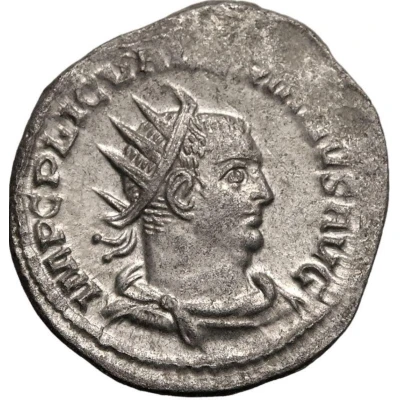Antoninianus - Valerianus VICTORIA AVG; Victory
| Silver | - | - |
| Issuer | Rome › Roman Empire (27 BC - 395 AD) |
|---|---|
| Emperor | Valerian (Publius Licinius Valerianus) (253-260) Gallienus (Publius Licinius Egnatius Gallienus) (253-268) |
| Type | Standard circulation coin |
| Years | 253-259 |
| Value | Antoninianus (1) |
| Currency | Antoninianus, Reform of Caracalla (AD 215 – 301) |
| Composition | Silver |
| Shape | Round (irregular) |
| Technique | Hammered |
| Demonetized | Yes |
| Updated | 2024-10-05 |
| Numista | N#286000 |
|---|---|
| Rarity index | 92% |
Reverse
Victory, winged, draped, walking or standing left, holding wreath in right hand and palm in left hand.
Script: Latin
Lettering: VICTORIA AVG
Translation:
Victoria Augusti.
Victory of the emperor (Augustus).
Comment
Source:Online Coins of the Roman Empire (OCRE)
Interesting fact
The Antoninianus coin was introduced by the Roman Emperor Valerian in 253 AD as a replacement for the denarius, which had been the standard Roman currency for centuries. The Antoninianus was made of silver and had a higher purity level than the denarius, which had been debased over time. The coin was named after Valerian's name, Antoninus, and it was intended to symbolize the victory and prosperity of the Roman Empire under his rule. The coin's design featured an image of the goddess Victory on the obverse (front) side, and the emperor's name and title on the reverse (back) side. Despite its introduction as a new and improved currency, the Antoninianus ultimately suffered the same fate as the denarius, with its value declining over time due to inflation and debasement.

